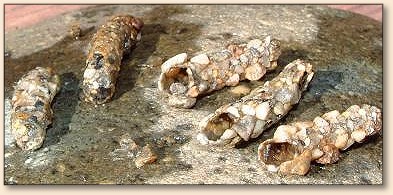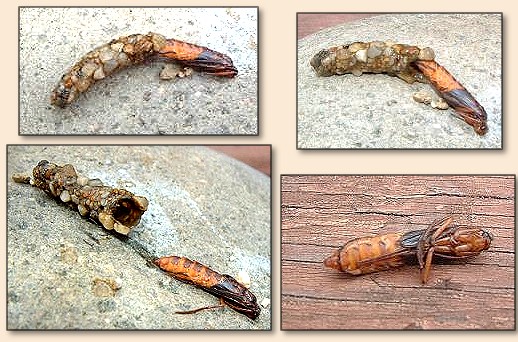|
One of the neat things about traveling to a Fish-In
is the little bonus stuff.
The Lochsa and Selway are both fantastically beautiful
rivers. They join, right at the Three Rivers Resort,
to form the Clearwater. The Clearwater becomes a huge
river and has both Steelhead and Salmon runs. In fact,
two years ago we watched as a salmon struggled in the
Selway still headed upstream.
There are wild turkeys everywhere in the area including
right in the campground. We saw whitetail deer in the
campground too. No lack of wildlife, Ron Eagle Elk and
Vickie saw two black bears up the Selway. Lots of berries,
especially Elderberries for them to eat. JC came across
some very fresh and colorful bear scat while exploring
downstream.
I picked some wild Elderberries several years ago and made
jelly and syrup from them. It took equal parts of sugar
to the juice to be sweet enough to use.
On our last day up near the end of the road on the Selway
we came across tons of really tiny frogs. These little
guys were about an inch long or less, brownish green and
very active. We didn't know who they were, so we did a
search through our books when we got home. We think they
are Chorus frogs, which are called that because of their
spring courting behavior. Do you know the difference
between frogs and toads? One has a smooth skin and one
has lumps. (No, I'm not going to tell you, look it up.)
It is a very long drive to Lowell Idaho for us, from door
to door about 10 hours. Usually a stop for lunch and one
for gas as well. We stopped on the way back at a place in
Colfax, Washington which we had visited before. It's located
just where we make a turn so is convenient. It is an old
drive-in which really isn't a drive-in any more, it was
called Mom's last year and has changed hands. It is now
Wells Steak and Seafood House. We were just going to pick
up a couple of milk shakes to take with us, but the food
being served at an adjoining table looked so good we just
had to order. The food was very good - do try it if you
are in the region. The milk shakes were so thick they
lasted over 100 miles of driving back.
We saw something which really had us scratching our heads.
We checked this one out in our books when we got home
too - but even though we were quite sure of our description,
it just didn't seem possible. So I sent an email to a fellow
writer locally who does a bird column every week for the
local newspaper.
I explained where we had seen one, then another large white
heron-like bird in swampy areas near the road between Royal
City and Vantage, Washington. Amazing as it seems, her
reply was:
"Sounds like great white egrets. Just had a report of one
from the Belfair area. We had two of these birds migrate
through Kitsap County this spring - one near Seabeck and
one on Bainbridge. Many thanks for the report."
These birds are native to a small region in Florida!
How neat is that?
When we arrived at the resort on Monday, JC went down to
the river (Lochsa) in front of the cabin and was turning
over rocks to see what insects were around and which ones
might produce a hatch. He gathered up several case caddis
cases which were empty, and a small rock with a couple still
attached. As the caddis pass into their final stage, they
release themselves from the rocks they have been attached
to and tumble in the stream until they emerge. We did
notice a great number of empty cases in the very shallow
water, so they either emerged there or their cases were
carried there by the stream current.
JC took some of the cases and the rock to the cabin next
door for Denny Conrad and the other guys to see. The next
day, Denny was down in the water collecting another batch.
In fact, he took some live ones home to raise them! Real
life entomology class.
Here are the photos of the ones Denny collected.


Now, for the topper, the Fly of the
Week this week is from Al and Gretchen Beatty's super
new book Innovative Flies and Techniques,
and it is a Case Caddis with the worm peeking out. By the
way, the little legs are how the caddis gathers its food.
They stick the legs/arms out of the case
and grab the tiny food particles as they drift by.

Do some investigating on your favorite stream and see
if you have these creatures. We have seem some in
Michigan streams where the insect has used pine needles
and sand to build the case. (In fact some think the
pheasant tail caddis imitates that.) Obviously you
need to match the case and insect to your local ones.
Caddis are a very important food source for all fish - and
very prevalent across the world (the Brits call them Sedges.)
If you have an opportunity to attend a Fish-In, do it.
You'll meet some really nice folks, swap all sorts of
information, maybe improve your casting, eat too much,
and have the chance to catch some fish. How can you
improve on that? ~ DLB

If you would like to comment on this or any other article please feel free to
post your views on the FAOL Bulletin Board!
|




